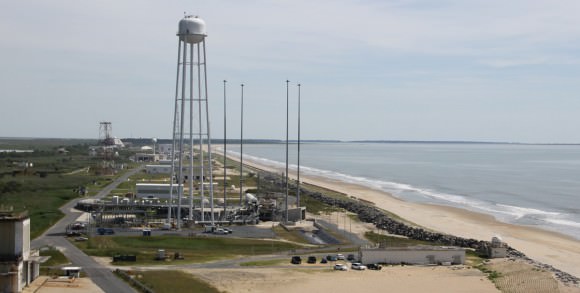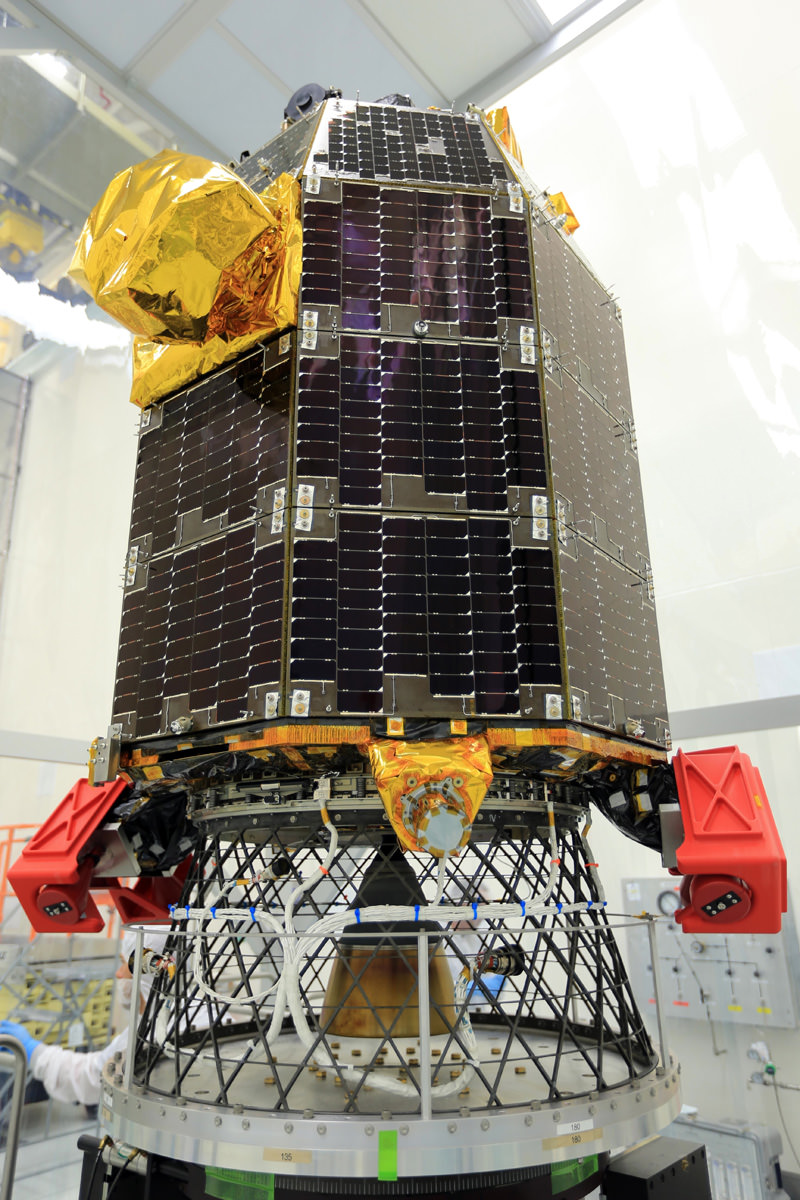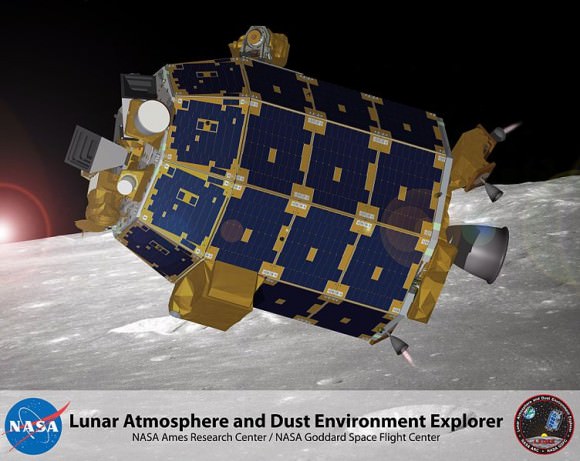NASA’s Lunar Atmosphere and Dust Environment Explorer (LADEE) Observatory has arrived at the launch site on the Eastern Shore of Virginia at NASA’s Wallops Flight Facility on Wallops Island and is now in the midst of weeks of performance testing to ensure it is ready for liftoff in early September.
The LADEE lunar orbiting probe will be the first planetary science mission ever launched from NASA Wallops and the Mid-Atlantic Regional Spaceport (MARS). It will soar to space atop a solid fueled Minotaur V rocket on its maiden flight.
LADEE will blaze a brilliant trail to the Moon during a spectacular nighttime blastoff slated for Sept. 6, 2013 at 11:27 PM from Launch Pad 0B.
LADEE is equipped with three science instruments to gather detailed information about the lunar atmosphere, conditions near the surface and environmental influences on lunar dust.
“LADEE will investigate the moons tenuous exosphere, trace outgases like the sodium halo and lofted dust at the terminator,” said Jim Green, Planetary Science Division Director at NASA HQ, in an exclusive interview with Universe Today.
“The spacecraft has a mass spectrometer to identify the gases, a physical dust detector and an imager to look at scattered light from the dust. These processes also occur at asteroids.”
“And it will also test a laser communications system that is a technology demonstrator for future planetary science missions. It communicates at 650 megabits per second,” Green explained to me.
The couch sized 844 pound (383 kg) robotic explorer was assembled at NASA’s Ames Research Center, Moffett Field Calif., and is a cooperative project with NASA Goddard Spaceflight Center in Maryland.
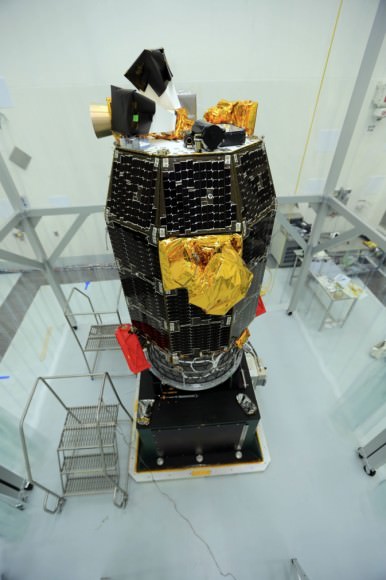
The spacecraft was then shipped cross country by a dedicated truck inside a specially-designed shipping container – blanketed with protective nitrogen – which insulated the spacecraft from temperature, moisture, bumps in the road and more than a few crazy drivers.
The first leg of LADEE’s trip to the Moon took 5 days. The trans lunar leg will take 30 days.
It’s standard practice that whenever space probes are moved by ground transportation that they are accompanied by a caravan that includes a lead scout vehicle to ensure safe road conditions and followed by engineers monitoring the health and environmental storage conditions.
Technicians are now engaged in a lengthy series of performance tests to confirm that LADEE was not damaged during the road trip and that all spacecraft systems are functioning properly.
“One important preparation about to begin is spin-balancing LADEE,” says Butler Hine, LADEE Project Manager. “During this procedure, the spacecraft is mounted to a spin table and rotated at a high-speed to make sure it is perfectly balanced for launch.”
After all spacecraft systems pass the performance tests, LADEE will be fueled, encapsulated and moved to the Wallops Island launch pad later this summer for mating with the five stage Minotaur V booster stack.
“I’m excited about the night launch because people up and down the Atlantic seacoast will be able to see it,” Green told me.
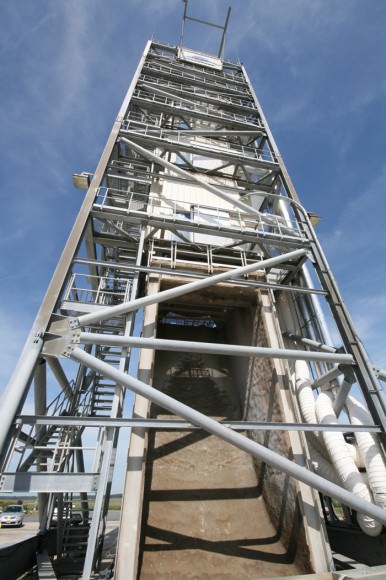
LADEE Launch Pad 0B at NASA Wallops Flight Facility in Virginia. Credit: Ken Kremer/kenkremer.com
